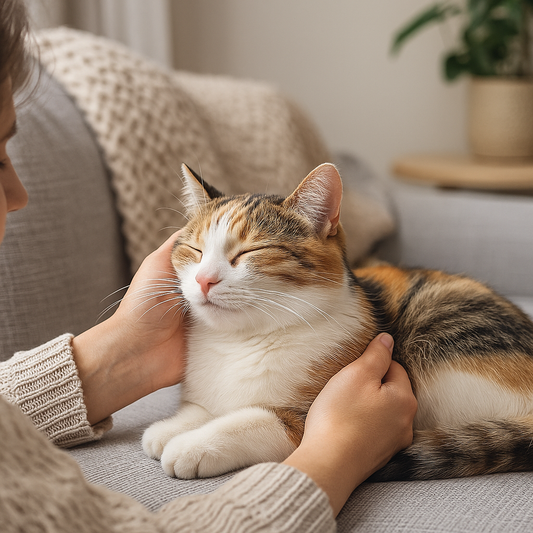
Toxic and Safe Plants for Cats: The Ultimate Houseplant Safety Guide
Share
Easter Warning:
Lilies & Cats Don’t Mix
With Easter approaching, many homes will be adorned with lilies—symbols of spring and renewal. However, for cat owners, lilies pose a serious danger. All parts of the plant, including petals, leaves, stems, and even pollen, are highly toxic to cats. Ingestion can lead to acute kidney failure and can be fatal if not treated promptly. Even brushing against the plant and ingesting pollen during grooming can be harmful.

Toxic Lily Varieties Include:
• Easter Lily (Lilium longiflorum)
• Tiger Lily (Lilium lancifolium)
• Stargazer Lily (Lilium orientalis)
• Regal Lily (Lilium regale)
• Martagon Lily (Lilium martagon)
• Japanese Lily (Lilium speciosum)
• Peace Lily (Spathiphyllum)
Symptoms of Lily Toxicity in Cats:
• Vomiting
• Lethargy
• Loss of appetite
• Increased or decreased urination
• Dehydration
If you suspect your cat has ingested any part of a lily, seek veterinary attention immediately.
Other Common Plants Toxic to Cats
Beyond lilies, several other popular houseplants and flowers can be harmful to your feline friends:
• Aloe Vera: Can lead to vomiting, diarrhea, and tremors.
• Snake Plant (Sansevieria): May cause nausea, vomiting, and diarrhea.
• Pothos (Epipremnum aureum): Leads to oral irritation and vomiting.
• Tulips and Daffodils: Bulbs are particularly toxic, causing gastrointestinal issues and even cardiac problems.
• Sago Palm: Highly toxic; ingestion can lead to liver failure and death.
• Dieffenbachia (Dumb Cane): Causes oral irritation, drooling, and difficulty swallowing.
Cat-Safe Plants to Brighten Your Home
Fortunately, there are numerous beautiful and non-toxic plants that are safe for cats:
• Spider Plant (Chlorophytum comosum): Easy to care for and safe for cats.
• Areca Palm (Dypsis lutescens): Adds a tropical feel without posing a risk.
• Calathea: Known for its striking foliage and pet-friendly nature.
• Boston Fern (Nephrolepis exaltata): A lush, air-purifying plant that's safe for cats.
• African Violet (Saintpaulia): Offers vibrant blooms without toxicity concerns.
• Prayer Plant (Maranta leuconeura): Features unique leaf patterns and is non-toxic.
• Hoya (Wax Plant): A trailing plant with waxy leaves, safe for feline friends.
• Ponytail Palm (Beaucarnea recurvata): Despite its name, it's not a true palm and is safe for cats.
• Bromeliads: Colorful and easy to care for, posing no harm to cats.
• Peperomia: Compact and diverse, these plants are cat-friendly.
Tips for a Cat-Friendly Plant Environment
Placement: Keep plants out of reach or in areas less accessible to cats.
Observation: Monitor your cat's behavior around new plants.
Education: Familiarize yourself with plant toxicity to make informed choices.







